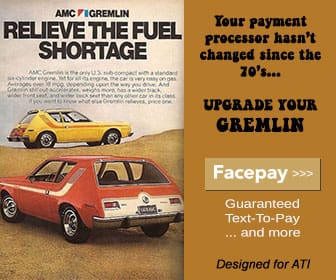Why Today’s Price Isn’t Yesterday’s Price

Are you keeping up with the times? Shop owners have seen a slew of hardships in the last twelve to eighteen months related to rising costs. All the stories we hear of rising housing costs, groceries, fuel, and other items are bound to have a ripple effect on our industry. If you haven’t reevaluated where your pricing should be during that time frame and done it multiple times over the last year, it won’t be a surprise that your margins and bank account balances may be decreasing. What can we do to make sure we stay ahead of this runaway train? Let’s see what impacted us first so we can make direct changes.
Staffing Shortages and Changes
The biggest hurdle to overcome for all industries during the post-Covid world has been staffing shortages. Transitioning from an employer-controlled world to one that is dictated by employees has been quite the work in progress. In competing for talent, we’ve had to engineer new pay plans, benefits, culture enhancements, and retainment methods. All these cost us hard-earned dollars. You can’t charge customers yesterday’s prices and expect to satisfy employees on their level without sacrificing margins. However, if we adjusted for the newly raised costs of having employees, we can compute where our labor rate needs to be to outrun those costs.
Employees Want More
Tiered labor pricing based on the work being performed is very important. For instance, a diagnostic being done on an electrical issue requiring scan tools, and an experienced technician with their education and know-how, shouldn’t be done at the same labor rate as a brake job. Chances are that an experienced tech and their benefits cost you more than the entry-level tech, and you must charge accordingly. When you make a mental choice of who gets what work based on skill level, start thinking are you collecting diagnostic and repair dollars on the same premise? If not, start adjusting for it now!
Your Service Time Is Valuable
Beyond adjusting the labor rate, having an appropriate labor matrix is also a must-have. At face value, labor guides are just that – a guide. They don’t consider aging and rusted vehicles that prove themselves to be problematic and time-eaters. There should never be a circumstance where the billed hours associated with a service are outrun by the actual time taken to perform the repair. To accommodate for those broken or seized bolts and the additional time it will take to remedy those situations, labor matrices to the rescue!
Best practice in today’s world is a markup of around twenty percent for each hour of a repair, meaning at hour five, you should’ve collected six hours of time taken to repair. It’s understood the more billed hours associated with a repair, the likeliness of coming across an unforeseen circumstance is high. It’s best to factor these prospective issues into the labor estimate from the get-go and not have the all-too-common awkward call with the customer citing why the initial estimate will increase in price.
Parts Costs Have Increased
Costs for parts have also gone up during this same time frame due to a few different factors — scarcity, rising costs of manufacturing, or delivery costs. When these costs continued to rise, and we didn’t adjust our parts matrices, that means the business will eat the margin loss. That can’t and shouldn’t be. ATI has created a revised parts matrix that raised the cap of each pricing tier to offset this loss. With a revised parts matrix, we can maintain a great parts margin, and pass along our rising costs to our customers to maintain a viable business model.
Shop supply collection criteria also need to be investigated. Raising the percentage of total ticket value that is being collected, and raising the cap at the same time, makes it so we can outrun the cost of those supplies that sit on our shelves. What’s sometimes misunderstood about shop supply collection, is that it isn’t solely meant to make a margin on supply costs. It’s also meant to be a standalone revenue stream to help overcome business costs.
Our raised utility costs, rents, and the increased distribution dollars we want to take home don’t have a direct way to be offset when creating each individual repair order, except assistance from shop supply collection. Great labor and parts margins help, but why not give yourself the breathing room that is much needed in this day of inflation with no end in sight?
Other Business Owners Aren’t Hesitating, Neither Should You
These are the main ways to outrun the rising costs that are adding up fast on both our cost of goods and fixed expenses. Keep in mind no other industry is being apprehensive about what they need to charge to keep their business operating profitably right now. Parts vendors have no problem selling you a part for eighteen percent more than last year, prospective new employees have no problem dictating what it will take to get them in your door, and letters from the local natural gas company aren’t asking if you’re OK with the rate hike, they’re telling you. Make your pricing adjustments, stand tall with your head up, and be confident in doing the right thing for your people and your business.
Non-ATI Members: Want to learn more how to improve your business and increase your bottom-line? Start with a shop owner event at www.atievent.com. We have virtual and in-person events, fee-based and free, for both auto repair and collision repair shop owners. Find one near you today!

